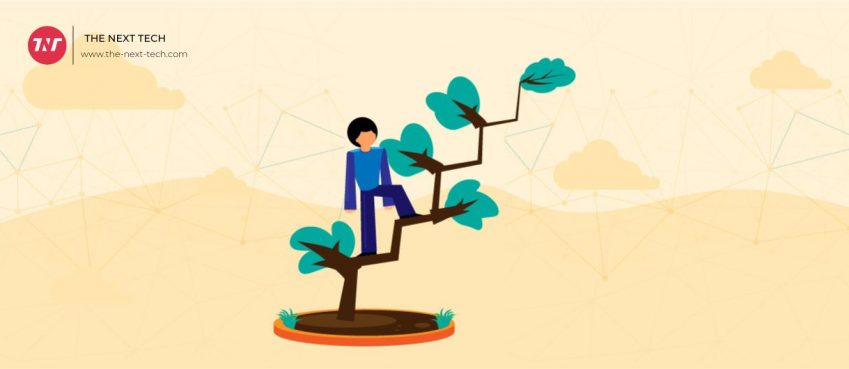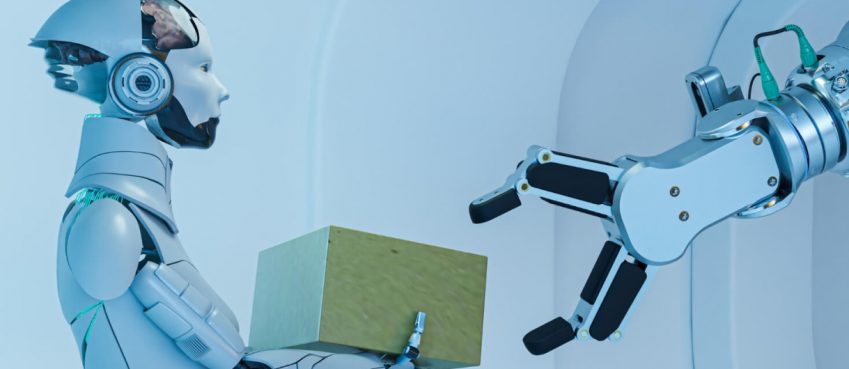
Robotics in agriculture is paving the way for a bright future. Global population will reach 9 billion people by 2025, according to predictions. The world’s population is on the rise and it is now that countries need to find new ways to feed themselves.
It isn’t easy. It is not easy. As people move from rural to urban areas, no one is willing to take over next-generation agriculture. Now is the time to introduce disruptive technologies such as artificial intelligence and robotics into agriculture.
Robotics is already a part of many commercial areas, including customer service, manufacturing and shipping. The agriculture sector is the next to embrace technology in a major transformation.
Why robotics, among all other technologies? Because it fills the gap between production and manpower. As primary farmers increasingly use robotics to address multiple challenges, the agriculture sector is experiencing a high-tech revolution.
Robotics is being used to eliminate production problems in the United States, Australia and Japan. In the next few years, robotics in agriculture will continue to grow in importance.
10 Best Applications of Robotics in Agriculture
1. Autonomous precision seeding
The first step in farming is to sow seeds. Farmers have traditionally sprayed seeds with their hands. The first modern machinery was introduced in the 1960s. Farmers used a ‘broadcast spreading to spread seeds. Although it was simple, the attached features caused a lot of seeds to be scattered around the field.
The good news is that autonomous precision seeding can be a great option. The robot can precisely place seeds where they are needed for good growth using a combination geomapping and robotics.
Also read: Top 10 Successful SaaS Companies Of All Times
2. Multi-talented robots to harvest
Robots are known for their ability to replace humans in repetitive tasks. This is how they harvest and pick. Harvesting is monotonous work.
It is necessary to harvest useful food products. Robots have taken over these repetitive tasks to relieve humans. Robots can easily plant and harvest basic food grains such as wheat and barley, but other tasks like vegetable harvesting and fruit picking require multi-talented robots.
3. Robots for micro-spraying
Most pesticide repellents end up destroying the soil after they are applied to plants. The soil is not always ploughed in order to alter its texture.
However, it is less likely that the chemical residue will be retained by future plantations. It can also be harmful to the environment. To reduce the impact, farmers have turned to micro-spraying robotics. Micro-spraying robots are able to detect weeds, then spray a specific amount of herbicide on them using futuristic computer vision technology.
Also read: 10 Best Android Development Tools that Every Developer should know
4. Robotic automation (RPA).
Plan lovers will love to plant a nursery. We can grow vegetables and fruits at home by planting the required crops. It can be quite time-consuming to water and care for them.
Robotic automation is the solution. Robotic process automation automates all aspects of nursery planting, including watering at regular intervals as well as picking the fruits and vegetables when they are ripe.
5. Robots for removing weeds
Farmers are their biggest enemy, the weeds. It is difficult and time-consuming to remove their unwanted growth. To overcome this problem, farmers now use robotics. The autonomous robots are powered by computer vision technology and can identify weeds accurately before they spread.
Also read: Apple CarPlay Not Working? Here’s 7 Troubleshooting Tips
6. LiDAR powered robots to collect data
It is just as important to know the state and condition of your plants as it is to water them. A normal soil or plant analysis can take many days because the farmer must collect samples from the plants and then share them with researchers in order to obtain the results.
The process can be simplified thanks to LiDAR-powered robots. They gather data about plants’ health, physiology and stress response, which they then use to improve their condition.
7. Drones
Drones aren’t new to agriculture. Drones have been used for aerial photography of fields since the 1980s. Agriculture was the first industry to fully implement modern drones powered by artificial intelligence. Drones can be used today to capture 3D imagery, map-building and crop monitoring.
Also read: Best Online Courses to get highest paid in 2021
8. Autonomous agriculture robots
The most recent innovation in robotics for agriculture is the autonomous robot. These robots are multi-tasking capable thanks to a variety of features and amazing technology. These robots can perform everything, including cloud seeding, planting seeds and harvesting. It can manage all aspects of agriculture and replace difficult manual tasks with machine technology.
9. Robot-assisted precision irrigation
The threat of water shortages in the future is both a result of climate change. The core of farming is water conservation. Unfortunately, fertilizing and irrigation processes consume a lot of water. Most of this water goes unutilized. Robot-assisted precision irrigation is a way to combat this problem by focusing on specific plants.
10. Sorting & packing robots
Sorting and packing require a lot more human operators than actual agriculture. The demand for packing workers is increasing in this fast-paced industry.
Many farming companies use sorting and packing robots to speed up the process without causing damage. These robots are able to speed up the packing process by using line tracking technology and coordination.
Also read: 10 Best AI Text To Speech Generator (October 2024)
The Future Outlook
Robotics is clearly on the horizon. Robots are taking over more of our everyday lives, from autonomous vehicles to automated service robots.
The largest sector of manufacturing in the world that requires the most technology is agriculture. The global food chain is in crisis due to climate change, population growth, political pressures following migration, the population shift from rural to urban areas, and the demographics associated with aging populations.
Now is the time to apply robotics to farming. The escape from this nightmare is robotics and autonomous systems. It can also be used as a replacement for critical food chain transformation.
After realizing the severity of the current food crisis, governments have also jumped on board the agricultural robotics bandwagon. Robotics in agriculture, including dairy farming, will reach new heights with central authorities.
Top 10 News
-
01
10 Exciting iPhone 16 Features You Can Try Right Now
Tuesday November 19, 2024
-
02
10 Best Anatomy Apps For Physiologist Beginners
Tuesday November 12, 2024
-
03
Top 10 Websites And Apps Like Thumbtack
Tuesday November 5, 2024
-
04
Top 10 Sites Like Omegle That Offer Random Video Chat
Monday October 21, 2024
-
05
Entrepreneurial Ideas To Make 5K In A Month (10 Realistic Wa...
Monday October 7, 2024
-
06
[10 Best] Cash Advance Apps Like Moneylion And Dave (No Cred...
Friday September 20, 2024
-
07
Top 10 Richest Person In The World
Tuesday August 27, 2024
-
08
Top 10 Unicorn Startups In The World (2024-25)
Monday August 26, 2024
-
09
Top 10 IT Companies In The World By Market Cap
Thursday August 22, 2024
-
10
[10 New] Best OnionPlay Alternatives To Stream TV Shows And ...
Tuesday June 11, 2024







